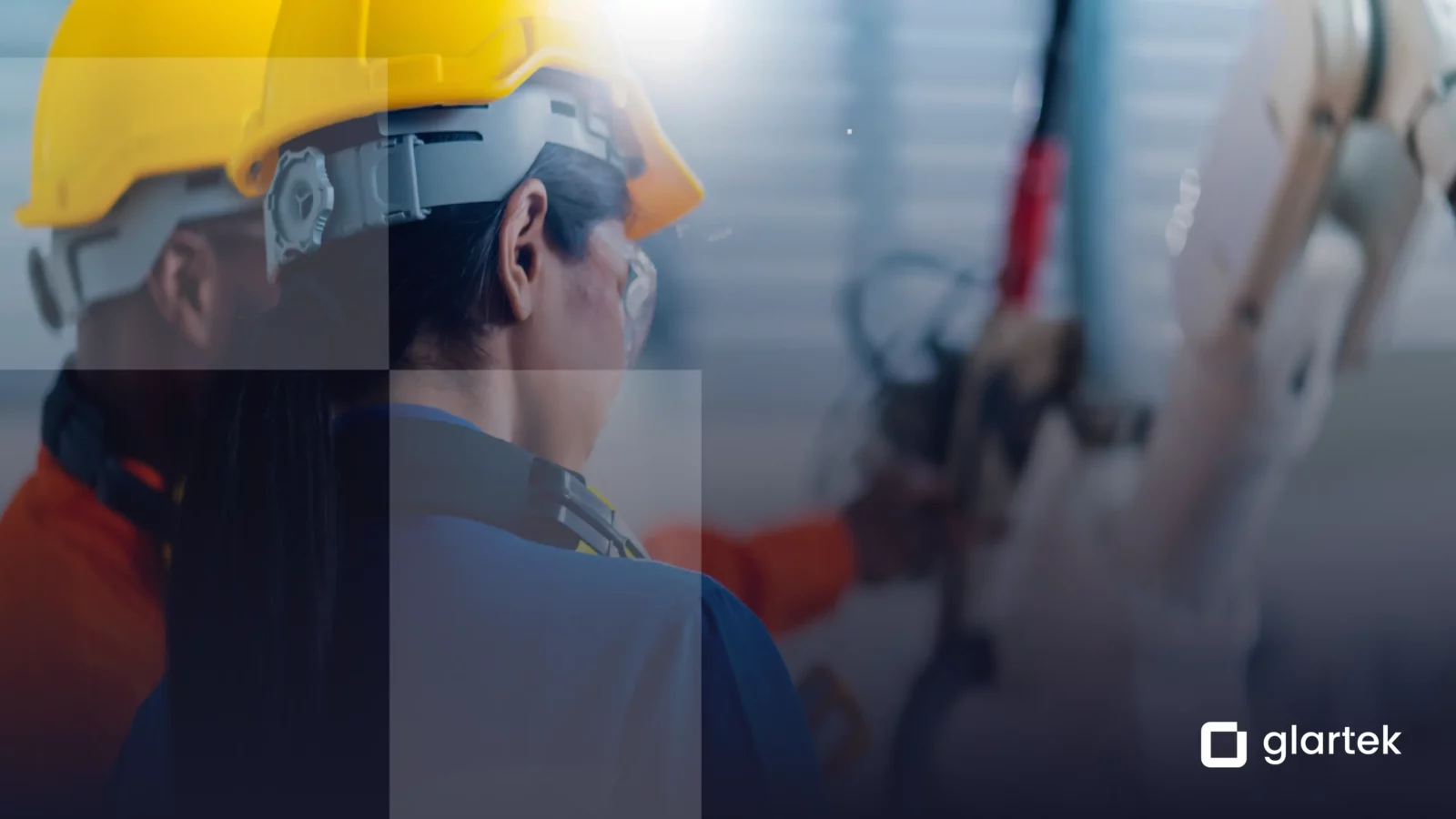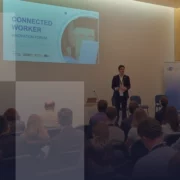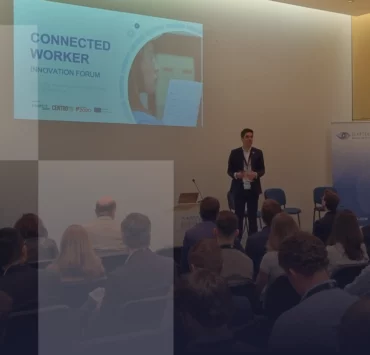In the modern manufacturing environment, companies rely on a range of systems, such as ERP, MES, CMMS, LMS, IoT, and collaboration tools, to keep operations running smoothly. However, many of these systems operate in silos, limiting their potential to drive true operational excellence. The Connected Worker (CW) platform can bridge these gaps by integrating seamlessly with these systems, providing a unified approach that enhances productivity, safety, and communication.
Let’s break down how the CW platform integrates with key manufacturing systems and the value it adds in real-world applications.
CW & ERP (Enterprise Resource Planning)
1.1. How do they integrate?
An ERP system manages business functions like inventory, scheduling, and production. However, human-centric tasks like inspections or work order management often remain disconnected. With CW integration, the system retrieves scheduled inspections or maintenance tasks directly from the ERP platform, pushing them to the operator in real-time.
For example, if an inspection procedure is due, the CW platform retrieves it from the ERP system and assigns it to the operator on their device. Once the task is completed, the CW platform automatically sends relevant data back to the ERP system, including:
- Status of the procedure
- Time spent on the task
- Data collected (e.g., temperature, pressure, etc.)
- Parts used (if any), which are then removed from stock in the ERP system.
Additionally, if the task results in an incident or equipment failure, the CW platform can create a ticket in the ERP system for further action.
1.2. What Does the CW Add?
The CW platform enriches manufacturing systems by adding a layer of real-time task execution, digital work instructions and guidance, data collection directly from frontline workers, and feedback that many ERP systems lack. By automating the task scheduling, data transfer, and reporting processes, the CW platform enables manufacturers to streamline their workflows, reduce errors, and make quicker, data-driven decisions.
CW & MES (Manufacturing Execution Systems)
2.1. How do they integrate?
MES systems control and monitor the production process, focusing on machine performance and overall production flow. However, human tasks and workforce management are often disconnected. With CW integration, MES systems can trigger alerts or procedures directly on the CW that will deliver digital work instructions to operators, to guarantee they have support while executing tasks.
For instance, a worker on the shop floor might receive a work instruction through the CW platform for a specific assembly process, ensuring they follow the correct steps as dictated by the MES system. The CW platform can also monitor human tasks, providing real-time updates about task progress and performance.
As workers perform tasks, the CW platform sends data back to MES, including task completion status, worker performance, and any issues encountered, offering a holistic view of both human and machine activities in real-time.
2.2. How Does the CW Add Value?
The CW platform complements MES by integrating human workflows with machine data, providing a comprehensive view of frontline operations with a human-centric approach. It not only tracks machine performance but also adds visibility into the performance of human tasks, ensuring the right worker with the right skills is assigned to the right task. This integration enables better planning, allocation, and optimization of resources on the shop floor.
CW & EHS (Environmental, Health, and Safety)
3.1. How do they integrate?
EHS systems ensure compliance with safety standards and regulations, but they don’t always provide real-time enforcement of procedures on the shop floor. The CW platform integrates with EHS systems by delivering safety protocols and procedures to operators via mobile devices.
For instance, before beginning a task, the CW platform will notify workers of the required safety protocols (e.g., proper equipment, hazard checks). As workers perform tasks, the platform monitors compliance in real-time, tracking whether safety procedures are followed and collecting relevant data (e.g., environmental conditions, equipment status).
If an issue arises, such as a deviation from safety norms, the CW platform can alert supervisors and trigger corrective actions in real-time, ensuring a proactive approach to safety.
3.2. How Does the CW Add Value?
The CW platform ensures real-time compliance with safety standards, offering a layer of visibility and control over workers’ adherence to safety protocols. By making safety procedures more visible and actionable, the CW platform reduces the likelihood of accidents. It ensures that safety data is collected and reported in real-time, improving overall workplace safety.
CW & CMMS (Computerized Maintenance Management Systems)
4.1. How do they integrate?
CMMS systems help manage maintenance tasks, schedule preventive maintenance, and ensure that equipment is well-maintained. However, they often lack the ability to facilitate communication and collaboration between workers and maintenance teams.
With CW integration, workers can report maintenance issues directly through the platform, creating automatic work orders in the CMMS system. For example, if an operator detects a machine malfunction, they can submit a report with photos and descriptions via the CW platform, which automatically creates a ticket in the CMMS system.
Moreover, maintenance teams receive real-time work instructions for repairs, and can communicate with operators through integrated collaboration tools like Microsoft Teams or Google Drive, ensuring that all parties are aligned on the issue and resolution.
4.2. How does the CW add value?
The CW platform bridges the communication gap between operators and maintenance teams, streamlining workflows and improving response times. By facilitating real-time collaboration and simplifying ticketing and reporting, it enhances maintenance efficiency and ensures that issues are addressed before they lead to more significant disruptions or downtime.
CW & LMS (Learning Management Systems)
5.1. How do they integrate?
LMS platforms are designed to manage employee training and track development. However, many systems do not provide real-time, contextualized training or support for on-the-job learning. The CW platform integrates with LMS by pushing training content directly to the operator’s device based on the task they are performing.
For example, if a worker is about to perform a new task, the CW platform uses its skills matrix to ensure that the worker has the appropriate expertise for the task. If the worker has not been trained or lacks the required skill level, the platform will block them from starting the task, ensuring that only qualified workers can proceed. Simultaneously, the platform can push contextual training videos or knowledge articles related to that specific task, helping the worker get up to speed quickly.
As the worker completes the task, the CW platform tracks their progress and provides real-time feedback to managers. This ensures that training efforts are aligned with on-the-job performance and allows managers to monitor the worker’s development and skills growth.
5.2. How does the CW add value?
The CW platform enhances LMS systems by providing contextual, on-demand training and skills-based task allocation. Rather than completing training at a fixed time, workers receive just-in-time learning that aligns with their real-time tasks. The skills matrix ensures that workers are always assigned tasks appropriate to their skill level, reducing errors and improving productivity. Additionally, real-time feedback from task performance allows managers to track progress and adjust training plans to close any skills gaps, ensuring the workforce is always ready for the challenges ahead.
CW & IoT (Internet of Things)
6.1. How do they integrate?
IoT systems capture critical data from machines, devices, and manufacturing systems, but they often fail to link this data to human actions on the floor. The CW platform integrates with IoT by bringing IoT data (e.g., machine performance, temperature, pressure readings) directly to the worker.
For example, if an IoT sensor detects anomalous readings on a machine, the CW platform can alert the worker in real time. The worker can then perform the necessary corrective action, while the platform logs the data and provides feedback to the IoT system.
6.2. How does the CW add value?
The CW platform complements IoT by making machine data actionable for frontline workers. By contextualizing IoT data and presenting it directly to the worker, the CW platform enables quicker responses to anomalies, proactive maintenance, and improved decision-making on the shop floor.
CW & Collaboration Platforms (Microsoft Teams, Google Drive, etc.)
7.1. How do they integrate?
Collaboration tools like Microsoft Teams and Google Drive help teams communicate and share information, but they often lack real-time task management capabilities. The CW platform integrates with these tools by allowing workers to communicate with colleagues or managers directly through the platform, while also accessing shared documents, manuals, and work instructions from Google Drive or Microsoft SharePoint.
For example, if a worker encounters an issue, they can instantly communicate with a team member via Teams while accessing critical documents related to the task through the CW platform.
7.2. How does the CW add value?
The CW platform enhances collaboration tools by embedding task-related communication, chats within work orders, and document management within the workflow. By combining task execution with seamless communication and collaboration, the CW platform ensures that teams remain aligned and that work gets done efficiently, even in complex, multi-team environments.
The Connected Worker platform seamlessly integrates with manufacturing systems such as ERP, MES, CMMS, IoT, LMS, and collaboration tools to fill gaps and provide a more unified approach to manufacturing. By enhancing the capabilities of existing systems, the CW platform allows for real-time task execution, proactive maintenance, contextual learning, and instant communication, leading to improved productivity, safety, and operational efficiency.
By integrating CW with these systems, manufacturers can achieve a connected, intelligent workforce that adapts to changing needs, maximizes resource utilization, and drives operational excellence. Ready to unlock the full potential of your systems? Let’s talk about how the Connected Worker platform can fit into your operations.




